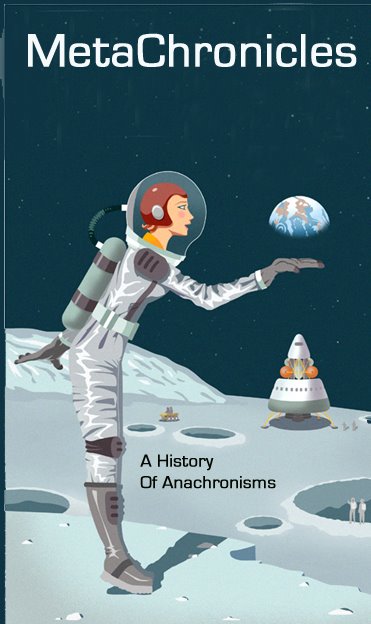Friday, February 19, 2010
Extended Hiatus
Tuesday, May 5, 2009
Steampunk Zombies!
 When this book arrived in the mail I was first struck by the wonderful production; a beautifully designed cover and slipcase, an airship token in a velvet bag. A great looking book. The book takes place in an alternate Victorian London. It is a pulpy adventure mystery starring two detectives Newbury and Ms.Hobbes. The pair try to unravel the mystery of a crashed air ship and a missing automaton while London is under siege by murderous zombies. A really fun read and there are more books in the series on the way.
When this book arrived in the mail I was first struck by the wonderful production; a beautifully designed cover and slipcase, an airship token in a velvet bag. A great looking book. The book takes place in an alternate Victorian London. It is a pulpy adventure mystery starring two detectives Newbury and Ms.Hobbes. The pair try to unravel the mystery of a crashed air ship and a missing automaton while London is under siege by murderous zombies. A really fun read and there are more books in the series on the way.
Saturday, April 4, 2009
The Run Down City Of Ember
Wednesday, March 25, 2009
David wyatt, Illustrator Of Yesterdays Tomorrows.
1 Was there a lot of research involved in the Larklight books or were you already very familiar with Victorian technology? Was this something new to you? I did do a lot of research – the classic Steampunk look is usually taken from the late Victorian period so I had to try and root our look in the mid 19th century, so there would be more brass and wood instead of iron and rivets. This was quite difficult as I’m quite a fan of the late period, particularly the Gothic Revival excesses, the Pre-Raphaelites, William Morris etc. so I’m naturally inclined to think of those styles when I think of Victoriana. Of course, being an extravagant historical fantasy I could get away with mixing things up a little. Being in
2 Was this your first science fiction work since 2000 AD? And how did it differ? I’ve done a few book covers, but being interested in history I’ve always prefered the anachronistic or post-apocalyptic sci-fi as you can mix up the styles. I’m always drawn to that rather than the ultra-modern, sleek spaceship kind of thing – possibly a result of seeing Star Wars at an early age and responding to the lived-in, battered look...
3 What, if any, do you feel is the appeal of older technologies? Firstly, while modern technology is astounding and there’s a lot to celebrate, there’s a feeling of removal from the tools. For instance, if I look under the bonnet of my car, it looks similar to the inside of my computer. I’ve got no idea where anything is. Look under the bonnet of an old Land Rover and even I can see what bit is what, and I’m in with a chance of fixing it myself. Also, there’s a fundamental human delight in things that are well crafted and built to last, unlike a lot of stuff these days that is expected to be scrapped very quickly and consequently designed as such.
Wednesday, March 18, 2009
The Alchemy Of Stone.
Monday, March 16, 2009
LarkLight


I’ve been a huge fan of Phillip Reeve’s work since I stumbled upon his work at a children’s book store that I worked at. He is one of the most compelling science fiction story tellers today and terribly underrated by SF readers. His work is inventive, emotional, funny and odd. Larklight is the first part of a trilogy that takes place in an alternate Victorian universe. It is a fast paced, steam powered outer space adventure. And the book is wonderfully illustrated throughoutby David Wyatt which truly adds to the narrative.
Mr. Reeve began this story because it occurred to him while visiting a science museum and looking at Georgian scientific paraphernalia that he wanted “to do a sci-fi story full of brass and mahogany"and in the book there is a real sense of fun and inventiveness. And as with the best steampunk there is a satirical note as well. You would not mistake this story for an unbiased love of Imperialistic Victoriana.
Thursday, March 5, 2009
Doctor Grordort’s Contrapulatronic Dingus & Directory
I'm not sure how to describe this wonderful book. It's part fake catalog of Steampunk and Atomicpunk merchandise, part graphic novel, part art book and part actual catalog of model rayguns. These Rayguns can actually be purchased. The full bodied atomic driven armour is as yet unavailable...This wonderful and strange little book is put together by Weta conceptual artist Greg Broadmore and published by Dark Horse Comics.
As Mr. Broadmore says on the Dark Horse website " As a child I was massively inspired and awed by the black and white serials on Sunday afternoon TV, in particular the 1930's Flash Gordon and the many Sci-Fi movies of that era. This book allowed me to pay homage to that world of science fiction and create something new at the same time...."
While ostensibly Steampunk/Victorian in it's scope the actual technologies and quite a bit of the aesthetic comes from the early atomic era and could be better described as Atomic Age or Raygun Gothic. I think this synthesis is extremely effective, adding to a sense of historical authenticity, after all an advanced atomic era would have many remnants of an advanced Victorian era.
Something that really deepens the scope of this book is the way it both embraces the wild, exuberance of the technology and critiques the colonial attitudes associated with having control of greater technology.
